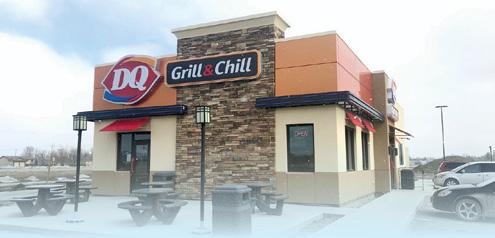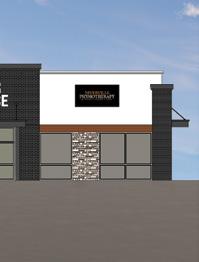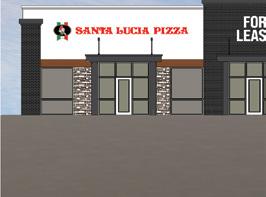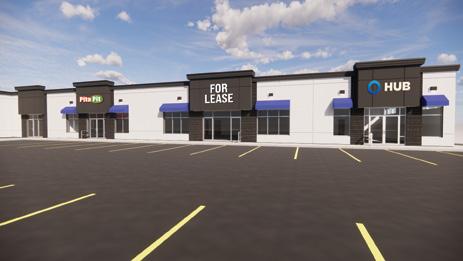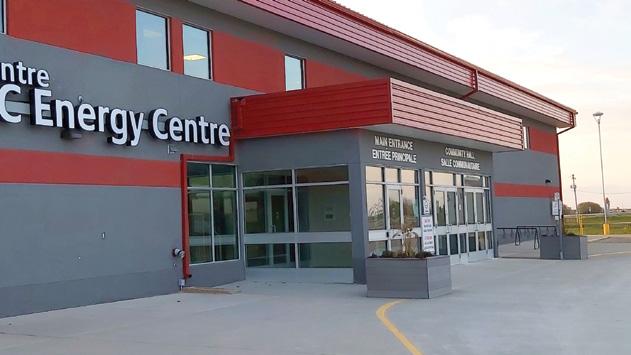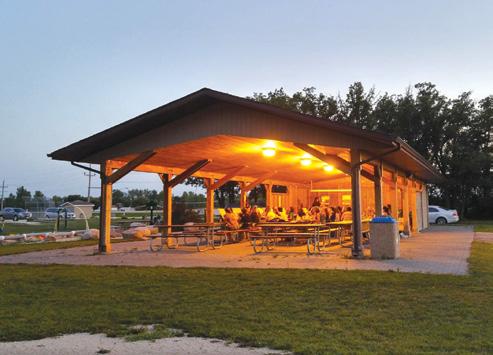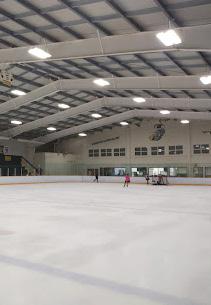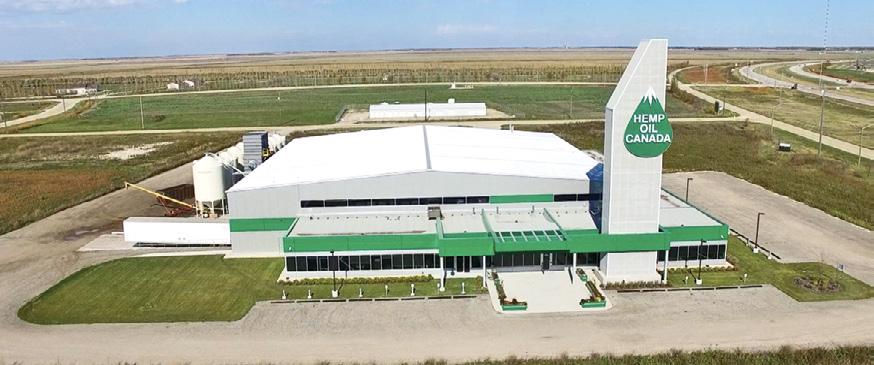




























































































































































Niverville is the fastest growing town in Manitoba with a population over 5,000, according to data collected by Statistics Canada for the 2021 census.
This is the continuation of a long growth trend, as Niverville’s population has been expanding by a similar amount for three consecutive census periods. Ten years ago, the town’s population was set at 3,540. Five years ago, it had jumped to 4,610.
The current population is pegged at 5,947, an increase of 29 percent over the previous count. There are 2,010 private dwellings within the town limits.
But of course the census is already two years old, and huge leaps of new builds and home sales throughout the post-pandemic period suggests that the town’s population by 2023 is very likely creeping close to 7,000—nearing the point, incidentally, at which Niverville would officially become Manitoba’s newest city.
Not only is Niverville the fastest growing Manitoban municipality with a population over 5,000, but it’s the fifth fastest growing municipality in that category in all of Canada, placing it in rare company.
The only municipalities in the country growing more quickly are East Gwillimbury (a suburb of Toronto), The Blue Mountains (a rural municipality along Lake Huron in southern Ontario), Langford (a small city on Vancouver Island just west of Victoria), and Saint-Apollinaire (a bedroom community south of Quebec City).
The visible signs of Niverville’s growth have been impossible to ignore over the last several years. The community has gotten a new high school, an expansive new community centre, several prominent new businesses and commercial developments, and residential expansion on all sides.
The RM of Ritchot also grew by 11.8 percent, reaching a population of 7,469. In the previous
census period, Ritchot had grown by 21.9 percent.

Ritchot and Niverville both had record-breaking construction years in 2021, the last year data was made available.
Ritchot saw an estimated $74.5 million in building permits issued compared to $41.3 million in 2020—an increase of 55 percent—bringing the region’s construction activity to its highest level in more than 10 years.
In total, 270 building permits were issued for various projects including swimming pools, renovations, commercial builds, and accessory buildings.
New housing increased as well, though not quite at the same rate as other projects, with 84 permits granted compared to the previous year’s 68.
Niverville’s construction remained strong as well, with 2021’s building permits showing a value of $56 million, a $30 million increase from 2020. According to the town, 2021 had 80 single-family home starts, 77 multifamily units, and 12 commercial and industrial starts.
Myron Dyck, mayor of Niverville, says that the town’s considerable residential growth shows once again that the area appeals to many young families who are attracted to the idea of living in a community where they can know their neighbour.

“The area around Winnipeg continues to see growth because of the value buyers see,” says Mayor Dyck. “Many do not know their neighbour in Winnipeg or other places they move from. They feel they can in places like Niverville.”

The town has also grown to the point where there are more jobs in the community and activities to enjoy without having to leave.
Doug Dyck, owner of Heritage Lane Builders, has extensive experience building in both Niverville and throughout Ritchot. The building company is the single largest builder outside


Winnipeg. With approximately 110 permits pulled in 2021, 63 were in Niverville alone.
As of the spring of 2021, Heritage had approximately 30 builds on the go locally, with approximately 12 in Niverville.
Dyck is pleased that the largest concentration of homes they build is in Niverville. Their typical builds range in size from a townhouse rental or duplex to single-family houses with no garage, as well as medium homes and even large homes with walkout basements. He says there is no sign of demand slowing down.
“There are several reasons as to why people are gravitating to rural communities such as Niverville,” says Dyck. “Some of these reasons are that, because of COVID, people have been restricted to stay close to home. This has caused people to re-evaluate what is a priority in their lives. If travel is limited, then our homes and yards are where we will spend more of our time.”
He points out that homebuyers are asking themselves many questions, like, “How do we want to live in our home? What is important to us? What do we need to feel the need for space indoors and out?”
Forecasting the needs of potential homebuyers in Niverville can be challenging, but Dyck says there are skilled individuals working in the community who are doing a good job of planning for expansion.
He credits the town’s leadership for making things happen with a mindset toward pushing sustainable growth.
“Our land developers, along with the Town of Niverville, have done an excellent job of forecasting growth and the needs of those that call Niverville home and those coming to be part of this wonderful forward-thinking town,” says Dyck. “This is a community one can be proud of. I like to say that we are a little community doing great things.”
It’s been almost two years since Blue Crescent Hotels first announced their intention to build a hotel in Niverville. In 2023, the official sod-turning should soon be underway.
Why the delay? Trevor Rempel of Steel Creek Developers, the company behind the hotel chain, says they’ve been waiting on the availability of a new and innovative building technology.
“From everything we have been hearing, it will be worth the wait,” Rempel says.
Once complete, the hotel will feature 73 guest rooms, including family bunkbed and kitchenette suites. A variety of meeting rooms and hospitality spaces will cater to wedding parties and corporate events.
This will be the fourth Blue Crescent property, with two others in Manitoba and one in Saskatchewan.
However, Rempel says that the Niverville hotel will serve as the flagship.
“We continue to look for ways to innovate our spaces and have created a new offering that we will debut in the Niverville hotel,” says Rempel. “Instead of traditional adjoining rooms, we have a block of two split-doubles adjoining to a split-single in between them. All three can be
used as independent rooms or adjoin [to form] a larger linked suite.”
Rempel says this unique layout will provide a wide range of options to meet guest needs. Families or groups renting the full three-suite combo will have five queen-sized beds in distinct areas with a gathering space in the middle.
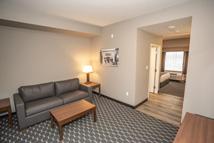
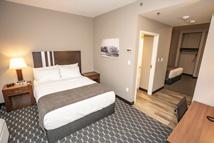
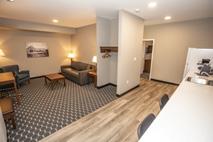
The hotel will also provide fun water features. Along with a full-sized pool, there will be two large waterslides, multiple hot tubs, and, if things go as planned, a sauna for the adults.
Since plans for the new hotel first began, the Community Resource and Recreation Centre has opened its doors nearby and is home to the Niverville Nighthawks, the newest members of the Manitoba Junior Hockey League.
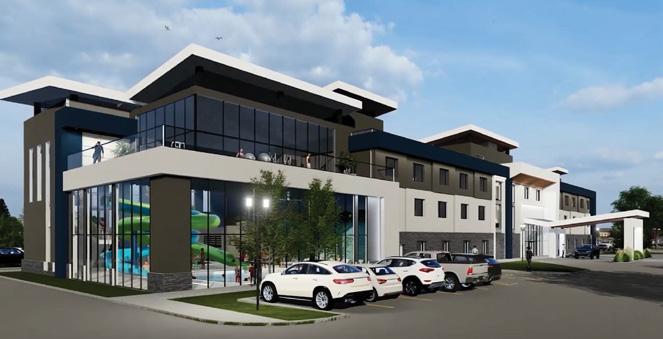
Aside from MJHL games, the arena and fieldhouse host many tournaments to draw crowds from across Manitoba—and beyond.
In the summer, Niverville’s Hespeler Park, with its acres of baseball diamonds and soccer pitches, also brings in countless visitors.
This, along with the likelihood that Niverville will host the 2026 Manitoba Winter Games, foretells an optimistic future for the hotel.
And that says nothing for the booming business presented by all the event centres in the
region. During the summer, there’s an influx of guests for big weddings every weekend!
In other words, the more time passes, the stronger the business opportunity for a hotel exactly like this one.
“We hope to establish ongoing partnerships where we can work together to ensure the overall Niverville experience can blow visitors away,” Rempel says.
The variety of restaurants within walking distance will give hotel guests just one more reason to enjoy their experience in Niverville.
“A licensed restaurant and lounge just a short walk across the parking lot is very convenient,” Rempel says. “We get important guest amenities right next door without having to develop it ourselves and Smitty’s Restaurant will have a valuable source of customers right next door. It’s a win/win.”
Rempel says that a definitive start date for construction hasn’t been nailed down just yet, but once it’s underway the construction will go remarkably quickly.
At this stage, he’s extremely optimistic that shovels will be in the ground soon. It’s even possible that the doors will officially open inside a year.
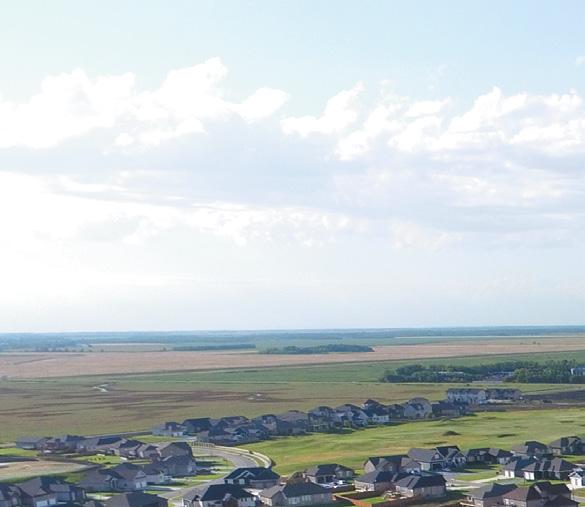
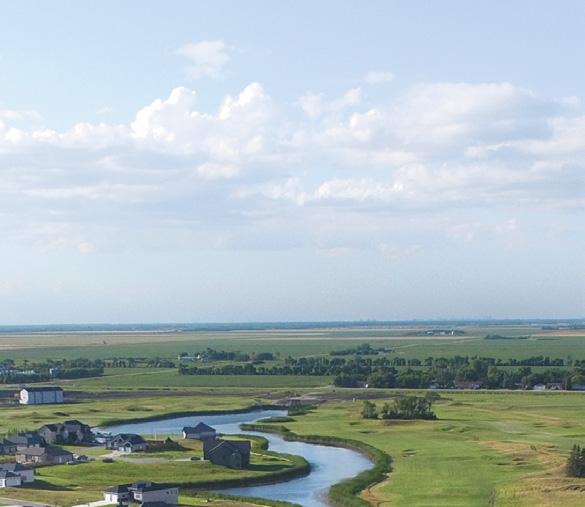
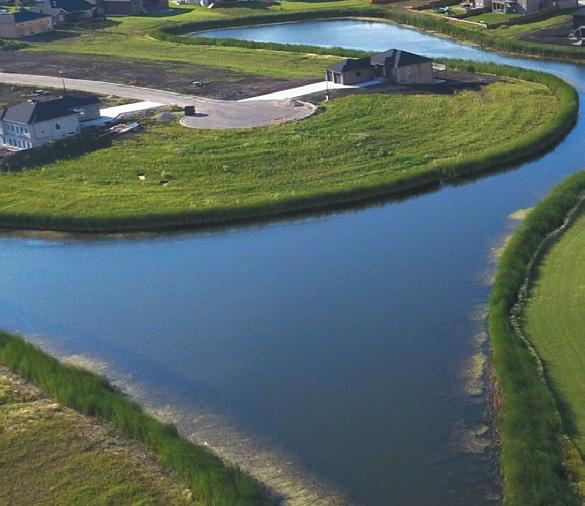












Repeatedly recognized as Manitoba’s fastest growing community, Niverville lies just 20 minutes south of Winnipeg. Along with unprecedented growth, this town of approximately 6,000 has become a regional hub for commerce, health, and wellness. It also enjoys convenient highway access to Winnipeg via three major routes.
The Niverville Heritage Centre campus is among the town’s one-of-a-kind features. Funded and built by the community, the eightand-a-half-acre complex includes life lease, assisted living, and supportive living units alongside a personal care home. It’s one of the only facilities in Canada where seniors can live out their senior years, with couples being able to remain together to the very end.
Also on campus, the community-owned Open Health medical clinic provides primary healthcare for the region. Doctors, nurse practitioners, mental health workers, dieticians, and other specialists work together in a holistic atmosphere.
While healthcare centres throughout Manitoba have struggled in the post-pandemic period, Open Health is going strong, with ten doctors on staff—and that number is continuing to grow.
“We have provided over 1,000 new patients with a family doctor in 2022 alone,” says Kristen Fyfe, the facility’s business manager. “We have served thousands of patients on a same-day basis who needed care, who either did not have a family provider, or who could not
get in promptly with their family provider. The demand for appointments is very high, so this is something we look at all the time and hope to continue to expand these services as we are able.”
An abundance of chiropractors, massage therapists, physiotherapists, and other health professionals also have offices throughout the town, making sure that this region is especially well looked after.
While the senior population thrives in Niverville, the most recent census indicates an extremely low average age of just 33. Suffice to say, Niverville is home to a vast cross-section of residents, including a strong contingent of young families and children.
Amenities abound, including a hardware chain store, a well-known furniture outlet, two pharmacies, and a recently expanded supermarket and liquor store. It’s all here. A wide variety of licensed and non-licensed restaurants also provide options for every palate or mood.
If you’re looking for a home, there’s something for everyone—rentals, condos, multifamily, and detached homes. There’s also no shortage of ready-to-build lots, if that’s your style.
Numerous residential subdivisions surround Niverville on all sides, offering stunning views of prairie vistas, ponds and walking paths, playgrounds, and even a golf course.
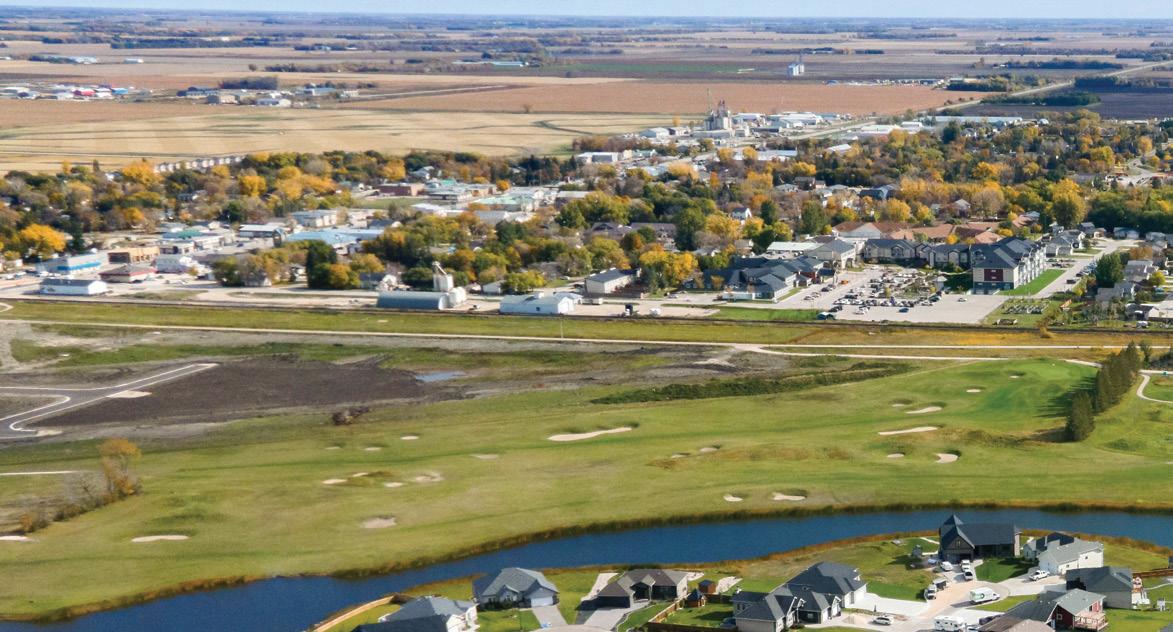
33.2 3
Three schools, including the brand-new Niverville High School, provide learning for every level from preschool to Grade 12.
As Niverville’s residential neighbourhoods grow, so does its commercial sector.
The community is in talks to acquire a significant amount of land from the neighbouring RM of Hanover, opening up space for an expansive new commercial corridor along a two-mile stretch of Highway 311.
The land proposed to be annexed by the town includes nearly 2,600 acres. It would double Niverville’s current land area.
Indeed, more businesses are setting up shop here on an annual basis, creating a growing number of local jobs.
Along with a vibrant retail sector, the community is home to a huge diversity of trades.
The Niverville Business Park is the site of many up-and-coming operations, and it’s still got room to grow with 55 new lots about to be released in its fourth and final phase.
The latest and greatest addition to the town’s recreational offerings is the impressive Community Resource and Recreation Centre (CRRC), with its fieldhouse, indoor playground, walking/ running track, and state-of-the-art arena.
Other organized sports include soccer,
baseball, hockey, curling, wrestling, and martial arts for young and old.
Three fitness centres, walking and cycling paths, and a variety of indoor and outdoor skating rinks can keep an active person busy year-round.
A variety of fitness classes can be found throughout the seasons, including yoga, CrossFit, boot camps, and sessions for moms and tots.
Hespeler Park, in the heart of the community, is a great place to head over to whenever you’re in the mood for picnics, summer sports tournaments, cross-country skiing, a family stroll, or a cooldown at the splash pad. The park is also home to a natural wildlife habitat teeming with birds and small animals.
Do you have any beloved family pets that need the freedom to run? If so, know that Niverville has a spacious off-leash dog park where they can let loose and play to their hearts’ content.
If your family has an interest in the arts, a local dance company provides advanced instruction for people of all ages in a variety of disciplines.
Art and instrumental classes are available all about town, led by seasoned artists.
But the one event that draws in more people than any other is the Niverville Olde Tyme Country Fair.
This massive street festival, which pulled in between 15,000 and 20,000 as recently as June 2022, has become wildly popular and is now in its third decade of delivering a rousing schedule of renowned entertainers, carnival rides, classic car shows, and plenty of great food.
Niverville, like the rest of this corner of the rural southeast, was originally occupied by the Indigenous peoples who signed Treaty 1 in 1871. At the same time, many Mennonites in southern Ukraine, then part of Russia, were looking to leave their wartorn land.
In 1871, the Canadian government sent William Hespeler overseas to recruit some of these Mennonite farmers to Manitoba.
Hespeler convinced a group to visit, and the visitors wrote a favourable report about the land and conditions here.
About a year later, 12 Mennonite delegates came to North America and took a tour of southern Manitoba, as well as the state of Kansas.
After examining both locations, they chose the land in Manitoba.
Four of these men signed an agreement, or what they called a Privilegium, that laid out a guarantee from the government of religious freedom, military exemption, and land. This land became known as the East Reserve, because it was located east of the Red River.
In 1874, Hespeler oversaw the development of a railway station in the East Reserve.
The town to grow around the station was originally named Hespeler, but over time it took on the way of its railway station: Niverville.
This somewhat obscure-sounding name had been chosen by the Canadian Pacific Railway in 1877 to honour eighteenth-century explorer and fur trader Chevalier Joseph-Claude Boucher de Niverville, who had one of the longest military careers of any officer in the Canadian Army at the time.
Hespeler was also the mastermind behind the unique round grain elevator which was erected next to the railway station.
It was from this elevator, built in 1879, that the first barley from western Canada was shipped to foreign markets.
In the early 1880s, the East Reserve was divided into two municipalities, one of which was the RM of Hanover. Niverville was originally located in Hanover but was incorporated as a village on January 6, 1969, when five local visionaries stood before a provincial delegate for the swearing in of Niverville’s first self-governing council.
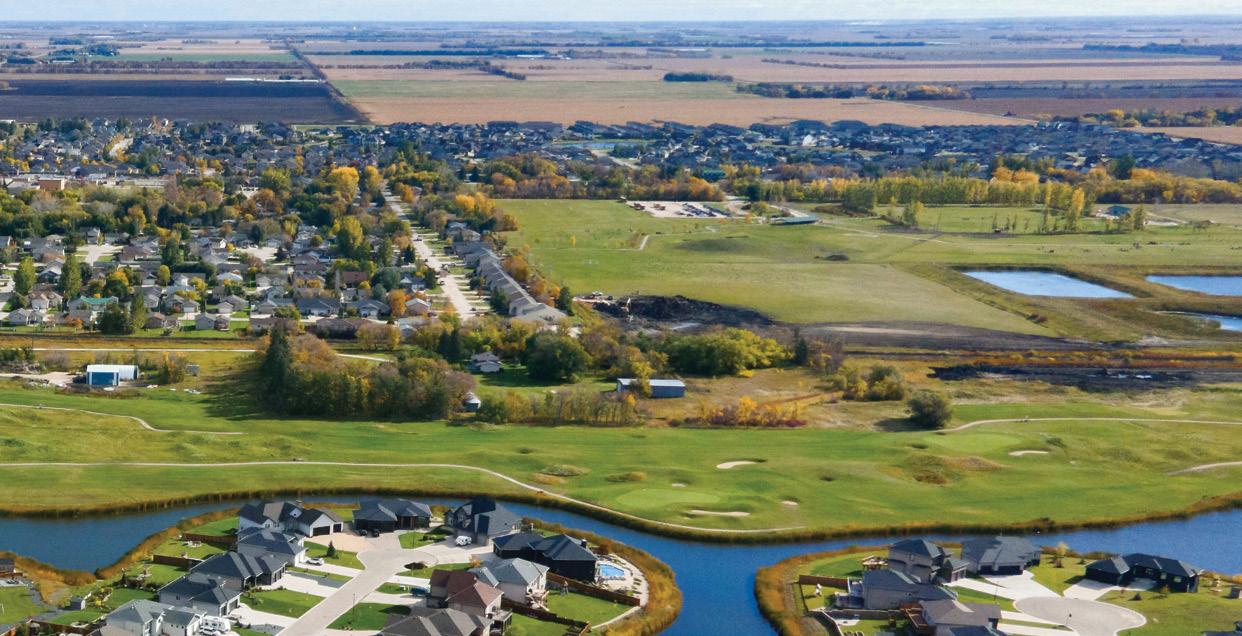
That same day, Niverville’s first mayor, William Kuzenko, received the charter for the newly incorporated village.
An unusual event on May 24, 1970 is often brought up in discussions of Niverville’s history.
The Niverville Pop Festival famously took place on an abandoned farm east of the junction of Highway 59 and Highway 305.
The festival attracted far more guests than expected. Accounts vary as to how many people showed up, but 12,000 seems to be at the low end of those estimates. The festival took place less than a year after Woodstock and drew a bevy of hippies to the area.
Just as the party was gearing up, torrential rains turned the fields where the concertgoers had parked into impenetrable mud. Upon returning to their cars, most people were unable to get out and had to wait for local farmers to tow them back to Highway 59. It was a mess not soon forgotten!
And more than 50 years later, they’re still talking about it.
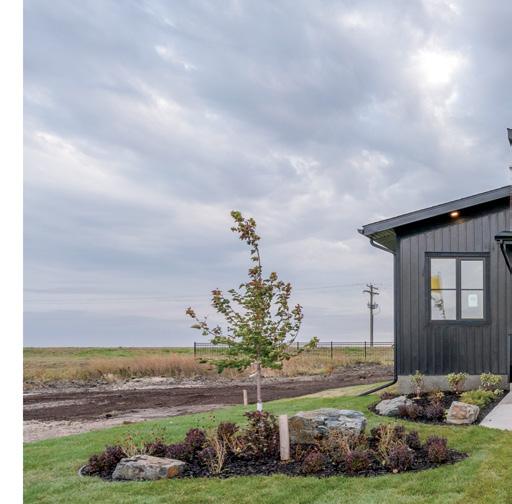
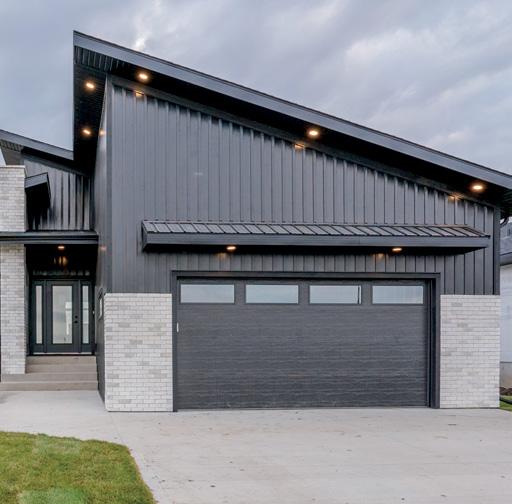











On July 1, 2021, Niverville celebrated the official grand opening of the Community Resource and Recreation Centre (CRRC). The $19.5-million facility had long been in the works.
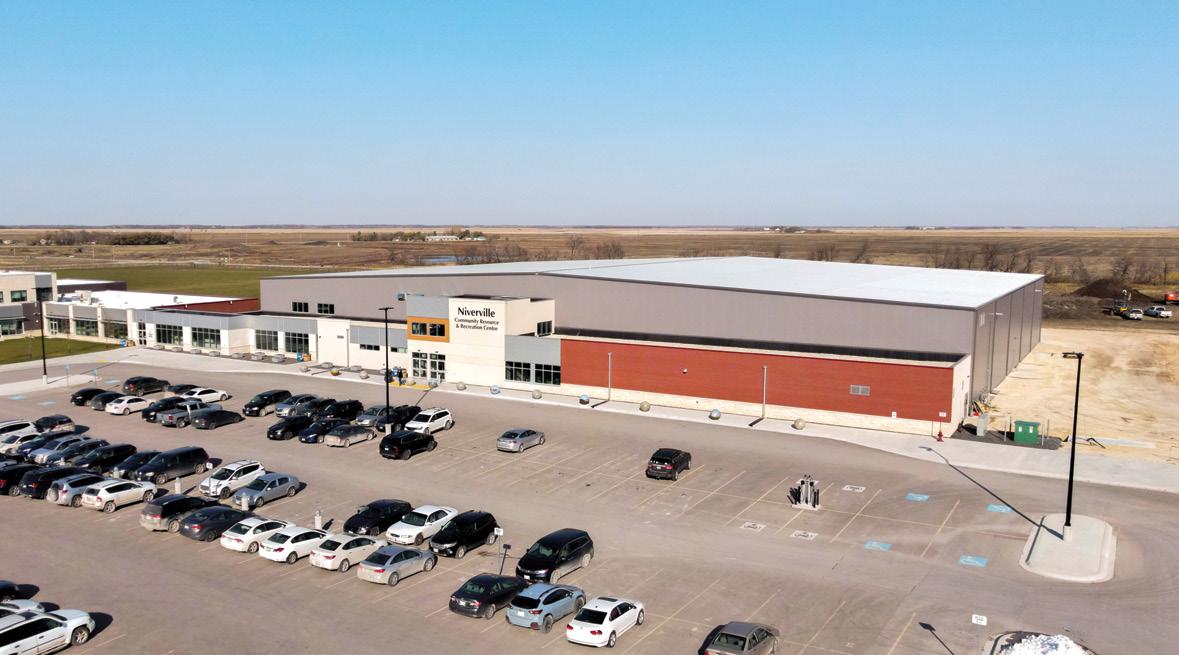
It was first proposed more than eight years ago, with construction breaking ground on the facility in July 2019.
“Through the years, council and the community have kept this dream. Some have had it for a lot longer than me,” said Mayor Myron Dyck when the facility first opened. “I’m just very grateful for everyone that has been involved. A project like this doesn’t come together except for the support of very key people.”
Upon entering the front doors of the CRRC, visitors find themselves in a spacious lobby which stretches the full length of the building. One end features the main washrooms, a seating area, a trophy case, and a donor wall that recognizes the many people who have made contributions to the building.
On the other end, visitors find a multipurpose space, a community kitchen, and a hallway link to the attached Niverville High School.
The indoor playground is a sight to behold on the far west end of the building. The structure rises the full height of the building, presenting children with a maze of dizzying ramps, slides, and obstacle-course-like features that keep them busy for hours.
“To be able to hear the sound of children at play is music to my ears,” Mayor Dyck said.
“To know that there’s going to be children interacting with one another, and just the innocence and freedom of them at play, and then the relationships that will form with the other parents’ groups that will be there at the same time, that’s just huge.”
Just a few feet away from the playground is the large fieldhouse, which can be divided into smaller sports courts to provide a great deal of flexibility.
The entire floor space of the fieldhouse can be used as a futsal (indoor soccer) court, or the centre of the room can be converted to showcase a feature basketball or volleyball court.
Alternatively, the space can accommodate two individual basketball courts, three volleyball courts, or nine badminton courts.
To provide further flexibility, built-in electronics are able to raise and lower the basketball nets, lower court separator curtains, and control the overhead lights individually.
The three scoreboards can either be used separately or connected to show results from the same game.
To put it mildly, this is a highly versatile space.
The fieldhouse is adjoined by three change rooms, as well as two locker rooms. The standard number of bleacher seats is 350, although this number can be expanded depending on how much floor space is being used for each event.
Overlooking the fieldhouse is a large


walking/running track which features three lanes. This mezzanine area can also be used to accommodate extra spectators, since it offers an outstanding view for those needing standing room when the bleachers may be full.
The fieldhouse can be used for more than just sports! Carpet can be rolled across the floor, converting the space into a large event hall that is able to accommodate up to 1,500 people at one time.
Upstairs, the second level includes an ample meeting space straddling the fieldhouse and arena, with excellent views of both. The space can be divided into two separate 1,600-square-foot rooms.
These rooms have rubberized floors, making them well-suited for aerobics and yoga classes. They can also be used to host meetings.
On the other side of the CRRC, visitors encounter a state-of-the-art arena which hosts the Niverville Nighthawks, the newest team in the Manitoba Junior Hockey League.
The Nighthawks played their inaugural season in 2022–2023 in front of frequently sold-out crowds. The team has certainly been the talk of the town.
The seating area in the arena is about to be significantly expanded to allow even more spectators to take in future games, including a lounge and room for more concessions.
You’re unlikely to forget your first visit to the CRRC in Niverville. And once you come once, you’ll probably be back again and again.
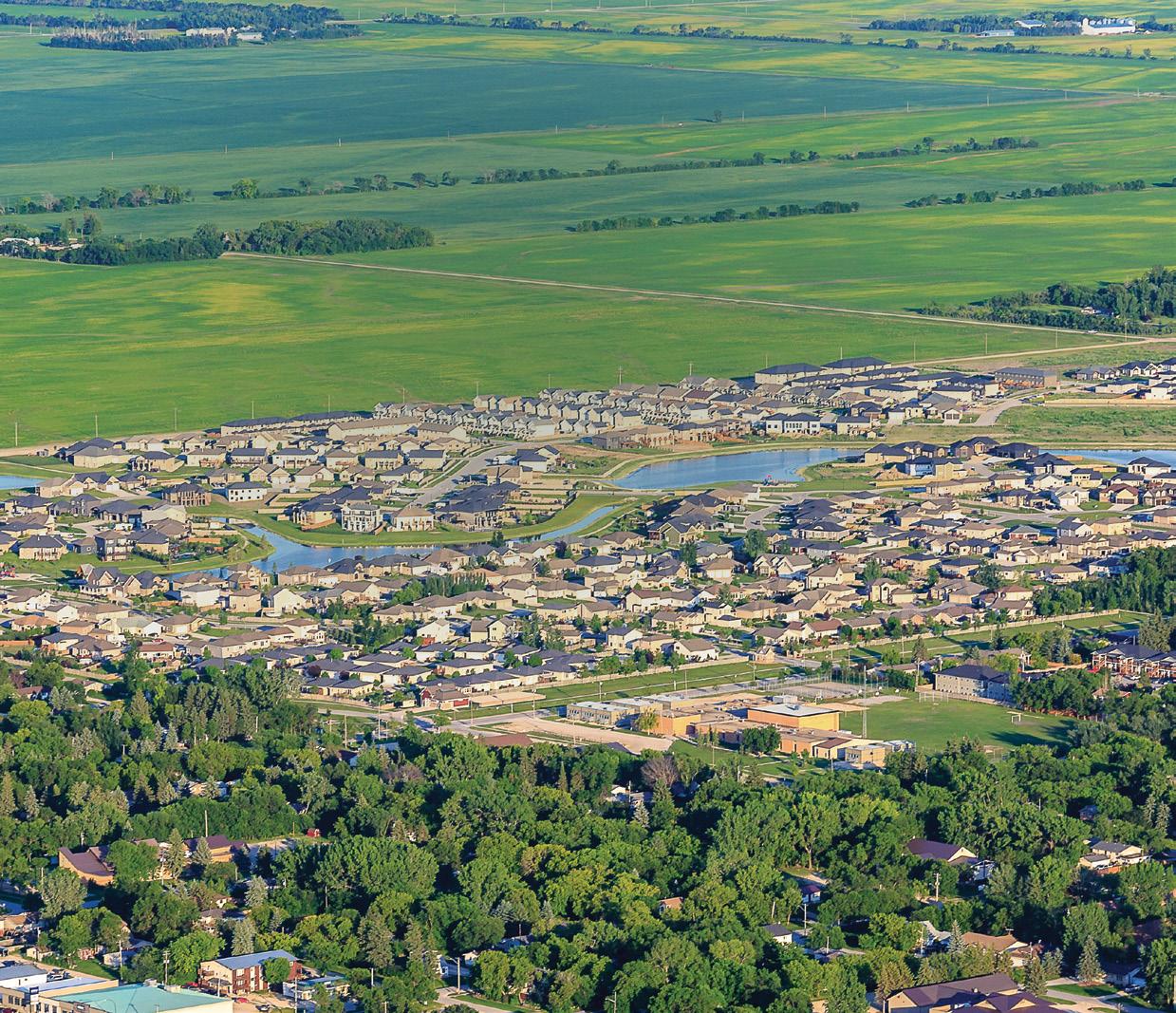
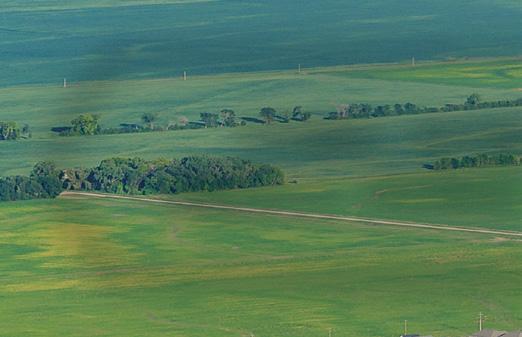
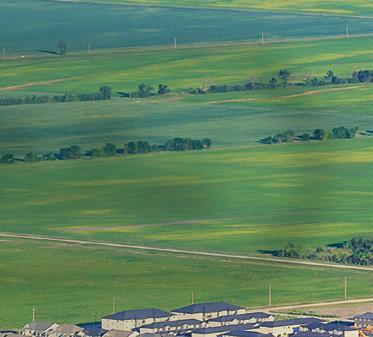





GRANDE PARK
(204) 381-1136
www.grandepark.ca
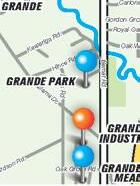

MEADOWS www.grandepointemeadows.com
JUNIPER BAY COMMERCIAL LOTS 474-2000 www.shindico.com
ÎLE-DES-CHÊNES STRIP MALL 255-4204

(204) 346-3041
NIVERVILLE BUSINESS PARK


(204) 388-4600
www.whereyou belong.ca
100 MAIN STREET - NIVERVILLE
(204) 791-2587
FIFTH AVENUE ESTATES
(204) 388-7000
www.fifthavenueestates.com
LIFE RETIREMENT LIVING
388-5000 ext. 211 www.heritagelife.ca
FAIRFIELD RIDGE
(204) 257-3904
www.fairfieldridge.ca
St. Adolphe, a quaint community along the Red River, has deep francophone roots. The spire of a century-old Roman Catholic church reaches proudly to the sky.
However, St. Adolphe has grown to welcome a wide cross-section of cultures due to its proximity to Winnipeg. Just 15 minutes from the South Perimeter, the community has been expanding to the north and south.
It is also well-known for its sense of community spirit. This was seen in recent years with the town’s vibrant Kraft Hockeyville campaign, to fundraise for repairs to the local arena. It has also been demonstrated by the grassroots founding of a new daycare on Main Street.
St. Adolphe acts as a hub for the RM of Ritchot. The municipal office is here. The town is also looked after by a busy recreation committee that works towards making the town a great place to set down roots.
The community offers a variety of housing options for families, retirees, and singles. Multifamily units, townhouses, and detached homes can be found in its residential neighbourhood.

The Tourond Creek development has plenty of open lots to welcome new families. Plenty of lots are also available for custom builds at pricing that beats any city lot by a country mile.
These newer developments are mini-communities in themselves, places where families can build long-term friendships, children play freely, and parents look out for the well-being of the neighbourhood kids. Parks, ponds, and skating rinks are scattered throughout.
St. Adolphe is home to a combined French immersion and English elementary and middle school. Students are bussed to nearby St. Norbert for high school.
New development means making room for commercial growth, too. A strip mall along Main Street offers attractive space for lease. There is also a range of commercially zoned lots on the south end of town, near the entran-
ce to Tourond Creek. Although not yet developed, these lots come with the potential for future job creation.
Until then, the daily commute to Winnipeg is no ordeal. It’s a lovely trek up St. Mary’s Road, winding along the well-wooded riverbank. Commuters can also easily access Highway 75 via the bridge.
This community is brimming with options for play and fitness. St. Adolphe has been built to make full use of its beautiful surroundings, whether it’s fishing, tobogganing down the steep banks of the town’s protective dike, or enjoying a winter hike on the Friendship Trail that attracts people of all ages to enjoy the view.
The river is also a great place to pull out your binoculars to enjoy the 244 species of birds known to this area. St. Adolphe has built a reputation for being a spot to glimpse the rare and elusive Chimney Swift.
A major tourist attraction is A Maze in Corn, two kilometres north. Besides the annual corn maze, this is also home to ziplines, a petting zoo, and an annual snow maze. In January 2019, they built the world’s largest snow maze at 30,021 square feet, verified by Guinness World Records—and the maze gets bigger every year.
The arena offers hockey and ringette for all ages, and the curling rink is top-notch. Cross-country ski trails run through the community, and snowshoe rentals are available. If you love snowmobiling, St. Adolphe is a Mecca for on- or off-trail fun, accessible right outside your door. The annual winter carnival is a great way to meet neighbours.
In summer, you can hike or cycle the Crow Wing Trail, plant fresh greens in the community gardens, or put out a canoe for a relaxing paddle. Get the kids involved in baseball or soccer, or take them to the nearby Red River Speedway for something a little different.
Year-round activities include gymnastics, karate, kickboxing, and pickleball. There’s also a community library to keep the family reading.
16.7%
37.4 1
Settled by the Métis in 1812, new arrivals began arrived after the merging of the Hudson’s Bay Company and the North West Company.
After the floods of 1826 and 1852, the town was known as Pointe-Coupée, or “Cut Point,” because it was surrounded on three sides by rivers and in the spring the rising waters sometimes cut it off from the surrounding land.
Pierre Delorme, a Métis fur trader and businessman, was born in St. Boniface in 1832. He married Adélaide Millet at the age of 20 and in 1857 the couple bought Lot 21 in Pointe-Coupée. The Delormes built a log-framed two-story house on their new land and this house came to serve as an important meeting place for the Métis leadership.
Also in 1857, the Parish of St. Norbert was founded. At that time, the parish encompassed Pointe-Coupée and Point-à-Grouette (now known as Ste. Agathe).
When the RM of Ritchot was founded in 1890, Pointe-Coupée was incorporated into it. A year later, the first post office in the area was built under the name of Dubuc.
However, in 1893 the town was renamed St. Adolphe, after Adolphe Turner, who made a large donation for the creation of a local church.
Ten years later, French nuns from the order Les Filles de la Croix (Sisters of the Cross) opened a Roman Catholic convent and school. The current Catholic church was built in 1913.
The flooding of the Red in 1950 and 1966 was severe enough that St. Adolphe was evacuated. After the 1966 flood, a ring dike was constructed. It has been expanded over the years and continues to keep the town safe and dry.
In 1893, a ferry was constructed to allow for easy crossing of the Red—and by 1967, it was the last ferry operating on the river.
Finally, in 1976, the Pierre Delorme Bridge was built to replace it. That bridge, in turn, needed to be replaced itself in the spring of 2011.
 Garden Ridge Park provides a multisport court in summer and a skating rink in winter.
Garden Ridge Park provides a multisport court in summer and a skating rink in winter.






























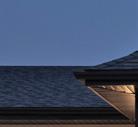
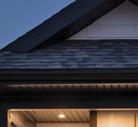






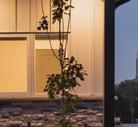





























Île-des-Chênes is a hopping little community just seven minutes south of Winnipeg’s Sage Creek neighbourhood along Highway 59, making commutes a breeze. The town is surrounded on all sides by farmland. You don’t have to get far from Winnipeg to rid yourself of the light and sound pollution of the city!
Many have come to recognize this small town as the home of the Wildlife Haven Rehabilitation Centre. A one-of-its-kind facility in Manitoba, the Haven provides shelter and a hospital for injured wildlife, as well as an education centre, ponds, and interpretive park for those interested in the local wildlife.
The TC Energy Centre is another draw. Named for the pipeline that runs nearby, the environmentally friendly facility offers an exceptional venue for weddings, trade shows, and socials, all at small-town pricing.

No matter your housing preference, diversity is the name of the game. Condos are available in apartment and townhouse styles, Main Street features rentals, and there are plenty of single-family homes on sprawling lots.
A 161-acre new subdivision is poised to take shape south of town, with the first phase having been given the green light. This neighbourhood will see the creation of 200-plus lots, as well as an expansive new greenspace.
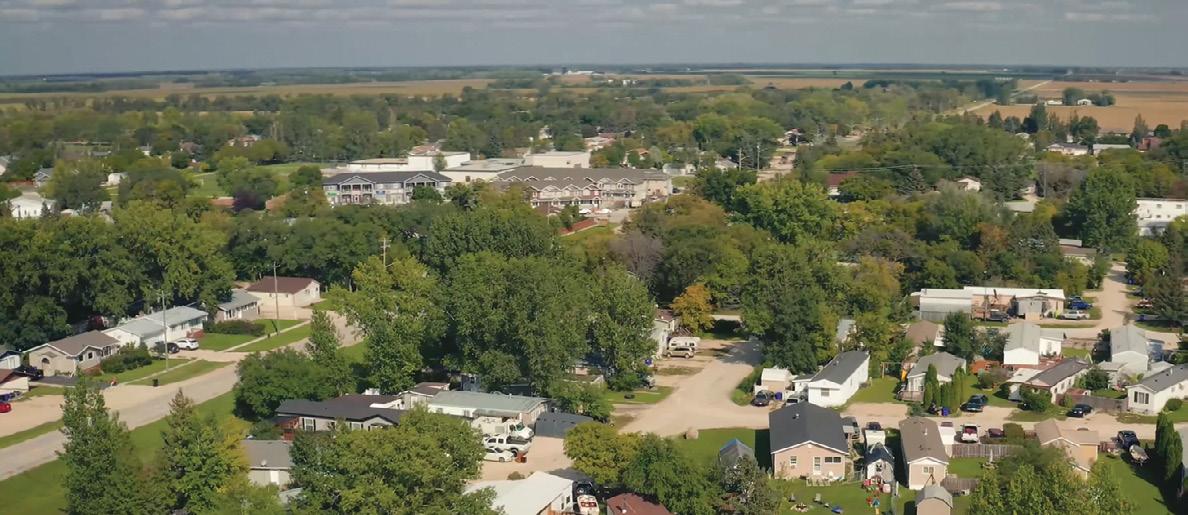
Two schools offer both English and French options from preschool through Grade 12. The high school boasts a prestigious athletic program for young athletes, as well as a library.
Amenities include licensed restaurants, including Thai food, pizza, sandwiches, and the local bar and grill. You’ll also find a gas station, hardware store, credit union, automotive repair shops, and convenience stores.
A community wellness centre on Main Street is home to the local doctor, pharmacy, physiotherapy centre, and legal office.
Île-des-Chênes has been paving the way for new business with a commercial development along Highway 59 offering one- to one-andhalf-acre lots with highway access.
Plenty of turnkey lease and rental space is available if you’re inclined to start a business of your own, at rates a fraction of the cost of Winnipeg’s.
The town is part of the Southeast Commerce Group, dedicated to providing services and benefits to businesses throughout the region.
Optimist Park is home to the Seine River Minor Ball Association, and its well-maintained diamonds make this park a baseball hub.
For the greenthumb, garden boxes are available for rent and provide wholesome ways to connect with other gardeners.
Year-round arts and fitness programming include painting classes, yoga, pickleball, gymnastics, and karate. A local studio trains kids in a variety of dance disciplines.
Of course, it’s rural Manitoba, where hockey and ringette take centre stage. The arena provides public skating and recreational hockey for all ages. Snowshoeing and cross-country skiing along groomed trails are another great way to stay active. Avid snowmobilers can find trails and wide-open countryside in every direction.
The Snowman Festival is an annual highlight, with family activities at the TC Energy Centre after the snowman-building contest, skating, and toboggan run have chilled your
fingers and nose. Mom and Dad can show off their skills in the pea soup and chili contest and then take in the vintage car show. The event closes with a beer garden, social, and fireworks.
The creation of Île-des-Chênes goes back to the late 1800s when settlers to the area came mostly from Québec.
The Roman Catholic Diocese of St. Boniface, determined to keep French-speaking people in the area, created a series of river lot parishes along the Seine and Rat Rivers. These eventually became the communities of Ste. Anne, Lorette, the Rat River Settlement, St. Malo, Grande Pointe, and Île-des-Chênes.
The Île-des-Chênes settlement appeared on few maps at the time (as Oak River) and only had water flowing through its river channel at certain times of year. The channel flooded every spring, causing locals to head to the highest point on their land.
This area was originally covered in oak trees and surrounded by melting snow—which is how it got its name, which translates to “Oak Island.”
A post office was established for the region in 1890 and the local Catholic parish was inaugurated in 1905. Telephone service came to town in 1920, followed by electricity in 1946.
In 1904, the area was organized into the Coquart School Division. The town had a oneroom schoolhouse called the École Coquart.
In 1958, however, the province passed an amendment to The Public Schools Act that allowed them to establish new divisions, and by 1965 reality caught up to the locals.
Coquart was dissolved and the area became part of the Seine River School Division, where it remains today.

Grande Pointe is so close to the city that it almost feels like a suburb. Just minutes from the South Perimeter, this picturesque spot lies along the tranquil and slowly flowing Seine River.
Unlike many suburbs, though, you don’t lose the small-town feel!
Community is vibrant and active here. Kids can play on the streets without concern, and a surge in young families and retirees means your kids will have plenty of friends and grandparents nearby.





The Grande and Grande Pointe Meadows developments cater to homeowners looking for room to breathe.

The exceptionally large lots are perfect for those wanting beautiful custom homes that won’t fit on the average city street.
Expansive three- and four-car garages
are easily accommodated, as well as huge, sprawling lawns with plenty of room for backyard parties and for the kids and pets to run free.
While few direct amenities are found here, few are needed. Sage Creek and River Park South are just minutes away. Île-des-Chênes is just five minutes south along the highway.
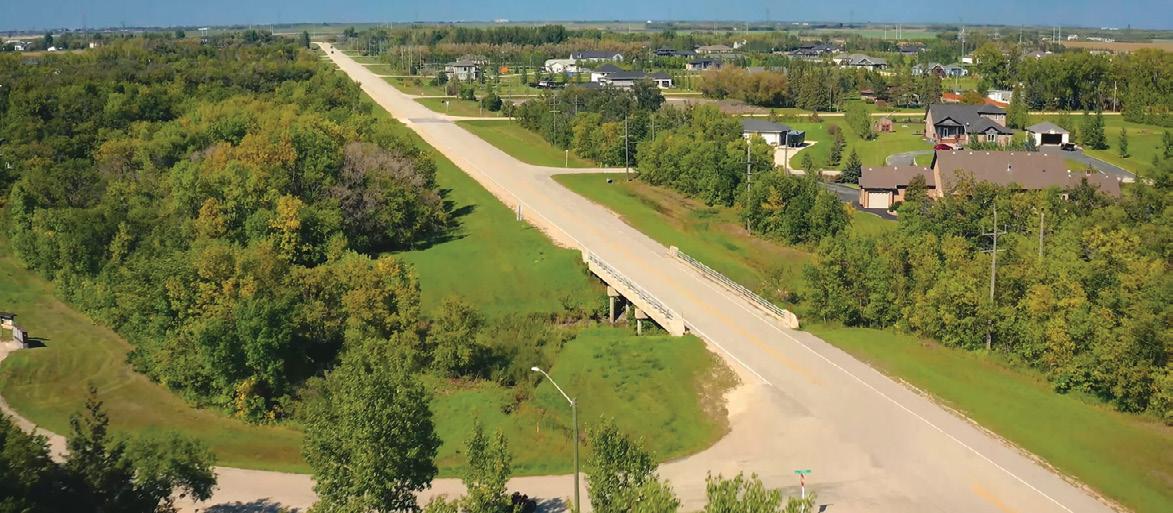
When you’re this close to Winnipeg, you don’t have to worry about your commute.
If you’re looking for the right spot to set up a business along a major transport route, you can hardly go wrong with Grande Pointe Industrial Acres, a large business park which offers two- and three-acre lots at reasonable rates and lower property taxes than can generally be found in the city.
Leasing is available, and existing businesses provide many jobs for locals.






Grande Pointe is home to one of the most beautiful parks in the region. Play features for the kids include gymnastic structures, a climbing wall, a labyrinth, swings, and sandboxes. The whole family can enjoy beach volleyball, basketball courts, baseball diamonds, and an outdoor skating rink complete with its own warming hut and restrooms.
The 3,200-square-foot Community Clubhouse has room to seat up to 150, making it a perfect event venue. Public skating and games of pickleball make the park active year-round.
The Seine River provides a serene spot for canoeing, and hiking trails meander its banks.
This densely wooded area is also a great spot for wildlife and bird-watching, or maybe lounging in the sunshine with a fishing rod in hand.
Across the highway, golfers can practice their swing at the Southside Golf Course.

building beautiful and healthy homes, completely custom and built to last





























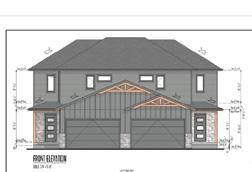
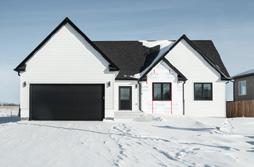
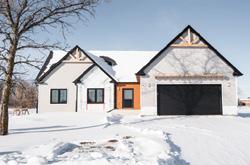
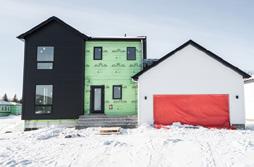
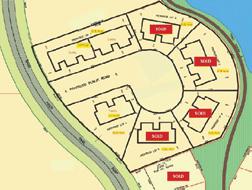



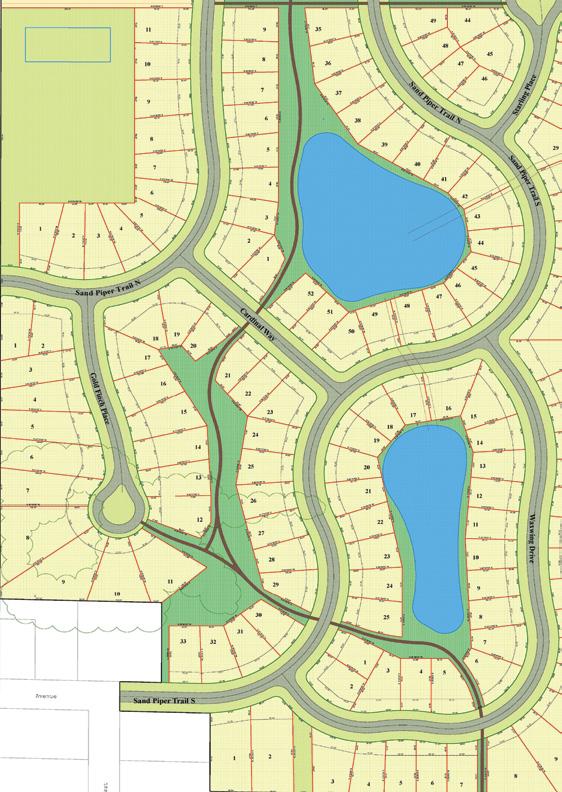
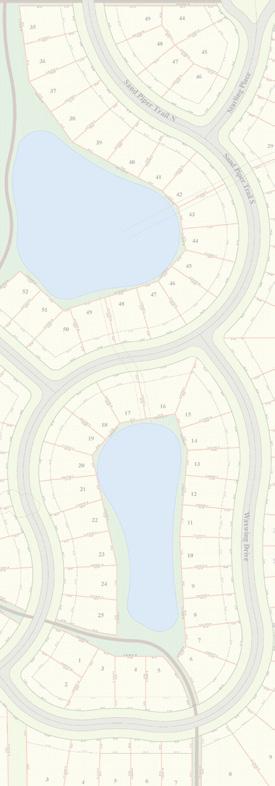

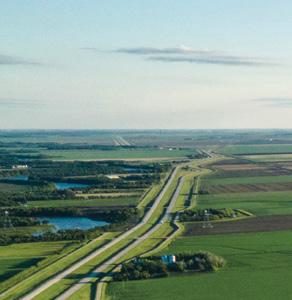

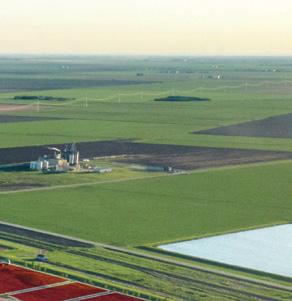
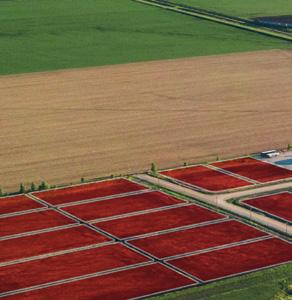
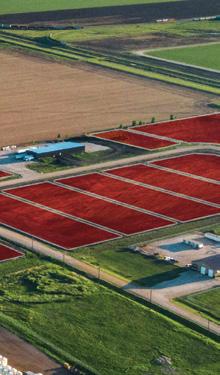
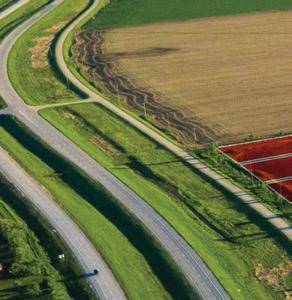








































In Ste. Agathe, located 20 minutes south of Winnipeg, the winding Red River provides an authentic riverfront experience.

While the town has long been a welcoming place for people of every nationality, its francophone roots are part of its charm.
The parish’s brick edifice, a lasting heritage icon, stands at the centre of town as a constant reminder of the area’s rich history.
Residential developments have expanded over time to the town’s north and south ends. Underground hydro, asphalt streets, curbs, and gutters offer city amenities without sacrificing that small-town feel.
Closer to the main drag, property hunters can find low-maintenance condos.
École Ste. Agathe provides students with a French education. A French preschool is also available. English and French immersion options are just a short bus trip away.
A large daycare offers full-time and part-time care for infants to school-age children.
The school boasts a library, and just up the street you’ll find the hall where residents gather to enjoy fall suppers, town meetings, dances, and indoor markets.
Other amenities include a licensed restaurant, gas station, automotive shop, convenience store, insurance agency, and credit union.
Because of its position along Highway 75, the Riel Industrial Park has grown into an in-demand commercial hub, attracting big businesses like Hemp Oil Canada, Flying J Travel Centre, Del Mar Commodities, and Upper Deck Transport. These businesses create hundreds of jobs. And with four-lane highway access to Winnipeg, the commute is quick and easy.
The summer kicks off with the Cheyenne Summer Fest, an annual highlight which draws a
crowd for the baseball tournament, live bands, children’s entertainment, voyageur games, and fireworks. A beer garden and food booths keep the crowds well-greased.
All summer long, locals enjoy the community garden, picnic shelter, baseball, soccer, volleyball, and Frisbee-golf at Cheyenne Park.

Hikers and cyclers make good use of a network of trails that winds between the river and the community dike.
The winter months provide no excuse for boredom with options for ice-fishing, snowshoeing, cross-country skiing, and indoor and outdoor public skating. Ste. Agathe is also a perfect home base if you’re a snowmobiler looking for great trails and wide-open space.
A big draw is a recent addition to the town’s recreation landscape: the Baudry Trails, a 3.5-kilometre trail system through the forest just to the east of the Red River.
The first recorded name for the town was Petite-Pointe-à-Saline (Little Salt Point), named for a nearby salt-making business.
Before 1872, the town became Pointe-à-Grouette, the name of a Quebecois homesteader. His first name seems to have been lost to time, but an 1870 census lists 157 residents, with only two being non-Métis.
Grouette built his home on the west bank of the Red River and began to farm the rich soil there. In 1871, a dock was built to allow Grouette and other settlers to cross to the east side of the river via ferry.
Throughout the years, seven different ferries have provided transportation across the river at this well-travelled crossing.
A bridge was built over the Red in 1959, although it wasn’t given its current name— Point Louis Riel Bridge—until October 13, 1988.
As the Roman Catholic Church organized the colonies along the Red River between St. Norbert and the U.S. border, they all got lumped
together into the new Parish of Sainte-Agathe.
That parish grew rapidly and was soon split into numerous smaller parishes. In 1873, the parish containing Pointe-à-Grouette was renamed the Parish of Sainte-Agathe.
Eventually the town adopted the name and Ste. Agathe was officially christened.
In 1872, Father J.B. Proulx built a chapel and two years later added on a residence. He called the residence La Maison Jaune (”The Yellow House”). In 1900, a convent was built nearby.
In the meantime, the former Grouette residence came to be used as a schoolhouse from 1872 to 1897.
Telephone service arrived in 1908, the same year that saw the construction of a hotel—although this hotel was replaced by a more modern structure in 1920 and renovated after massive mid-century flooding.
The hotel was closed in 1971 and finally demolished in 1990.
In 1948, four classrooms were added to the old convent. Twelve nuns handled the teaching responsibilities for students in all 12 grades.
Around 1962, La Maison Jaune was demolished. The next year, a new rectory was built. It still stands proudly today in the centre of town.
On the site of the former hotel sits an old steamship boiler. What is its significance?
The steamboat Cheyenne operated on the Red River throughout the 1870s and 1880s. The ship sank on June 2, 1885. But before it went under, a boiler was thrown overboard.
Nearly 100 years later, that boiler, stuck deep in the mud, was found during the construction of a new dike. The boiler was restored and now sits on the banks of the river as a reminder of the town’s past—and the power of the Red.
Another historic monument stands on the grounds of the church. A monument built of field stones was created by Auguste Brémault to commemorate the 100-year anniversary of Ste. Agathe as a parish.
Richard Nolette donated a Red River cart to stand at the site of the monument.
The communities south of Winnipeg are continuing to experience a residential boom.
The RM of Ritchot’s population jumped almost 20 percent from 2014 to 2019, and Niverville is almost certain to be the next Manitoba town to achieve city status.
Commercial and industrial demand has risen in lockstep with this increase in population.
The five-year total value of commercial building permits in Ritchot is $35,465,500. And in Niverville it’s $16,347,779.
The industrial parks in Ste. Agathe, Niverville, and Grande Pointe are great showcases for the ways in which the local economy has been successful in attracting big players.
As well, Niverville and Île-des-Chênes both have promising new strip mall projects, providing ideal opportunities for retail, franchises, and offices.
Lease rates for these new retail spaces are typically much less than similar spaces found in newer commercial developments in Winnipeg.
Land prices in the industrial parks are also highly competitive.
For example, the Riel Industrial Park in Ste. Agathe, which is on its third and final phase, is offering lots starting at $73,225 per acre. Those
lots are directly adjacent to Highway 75, the province’s foremost link to the U.S. and its market.
Prices in the Niverville Business Park start as low as $64,700 per lot.
Not only is the population here growing rapidly, but it’s younger than average and its household income is significantly higher.
In fact, it can be said that household income for those who live in this region, which was already strong in 2016, has grown even further according to a recent report prepared by Statistics Canada.
In Niverville, the median household income is $102,000. The percentage of homes in the lower brackets has shrunk.
In neighbouring Ritchot, the median household income is even higher, at $109,000. Together, these figures indicate a population with stable employment and a lot of disposable income.
Currently, 74 percent of residents in Ritchot commute to work in Winnipeg, with Niverville not far behind at about 70 percent.
These population and income figures, paired with commuter data, suggests that the labour force is largely untapped, a scenario which bodes well for larger companies that choose
to set up shop in the region.
These towns’ proximity to Winnipeg is also a positive in terms of a business’s ability to tap into Winnipeg’s labour pool.
After all, the convenient commute works both ways.
In 2019, economic reports pegged the number of jobs in Niverville at 1,612, representing approximately one-quarter of the total population. About 145 of these jobs are in the retail sector.
In Ritchot, the numbers are somewhat higher, with its 2,272 jobs, representing about one-third of the population.
Agriculture and construction are among the largest sectors in the region.
Healthcare and assistance, education services, and transportation and warehousing are other areas of strong job growth.
The abundance of skilled labour and high rates of population growth, coupled with competitive occupancy costs, provide an exceptional opportunity for business expansion and development in this part of the province.
There has never been a better time for businesses to explore the potential just outside the Perimeter!

